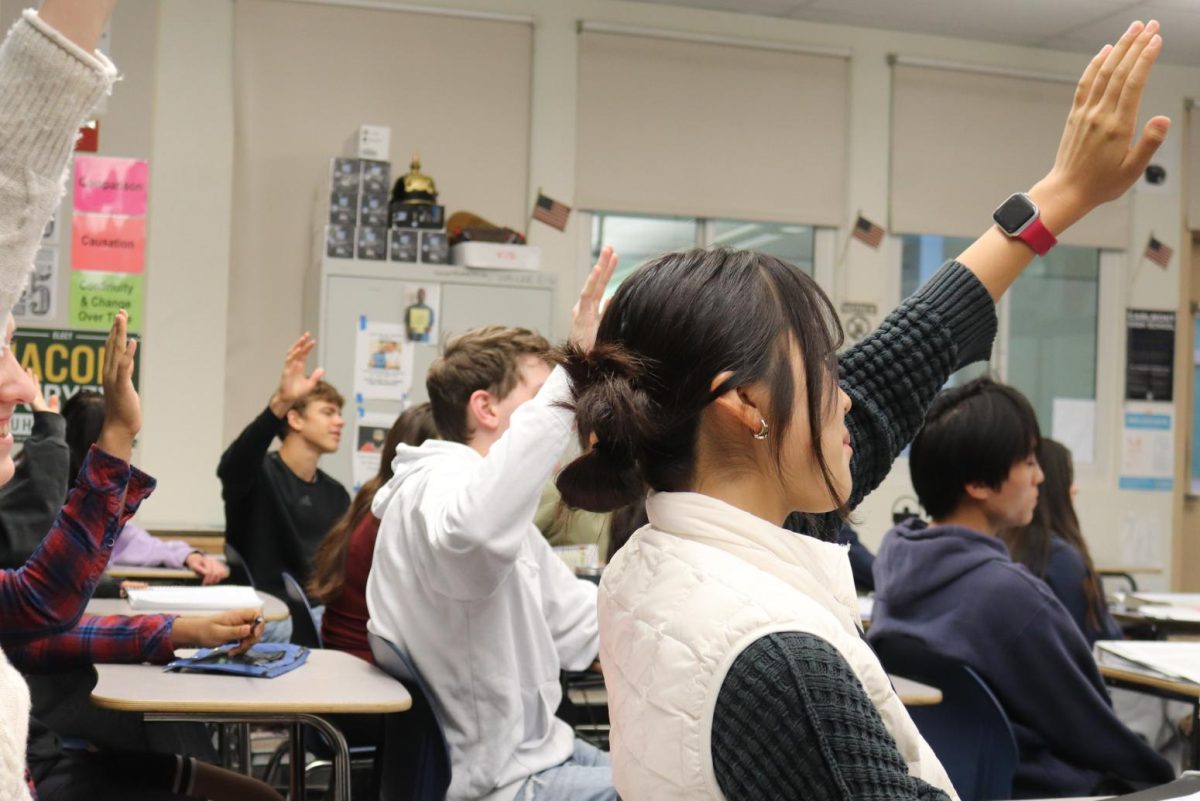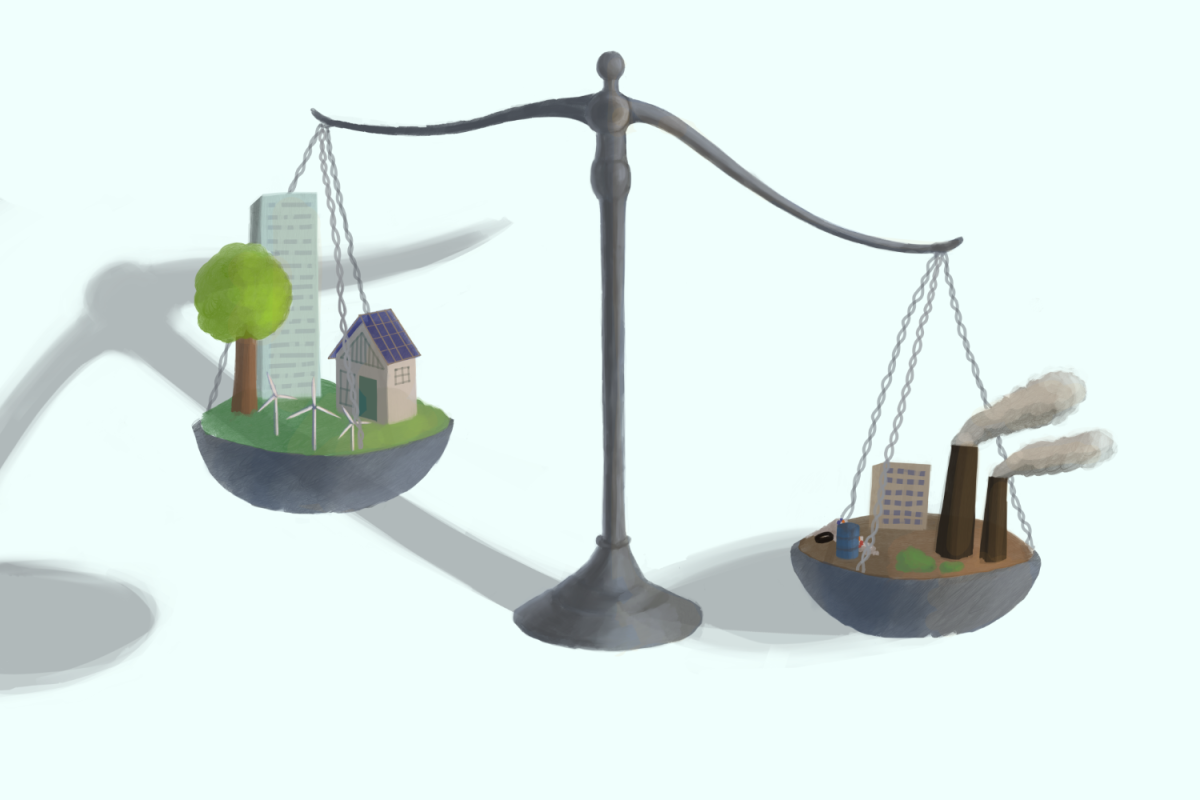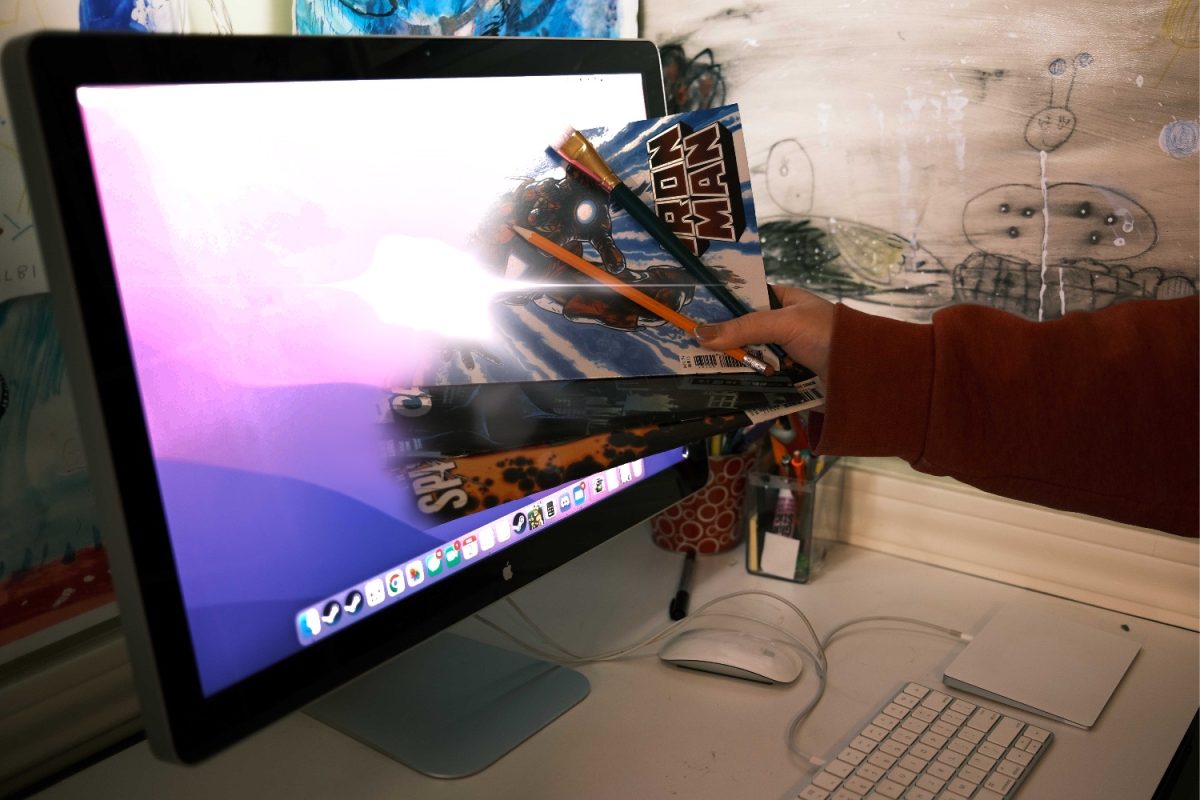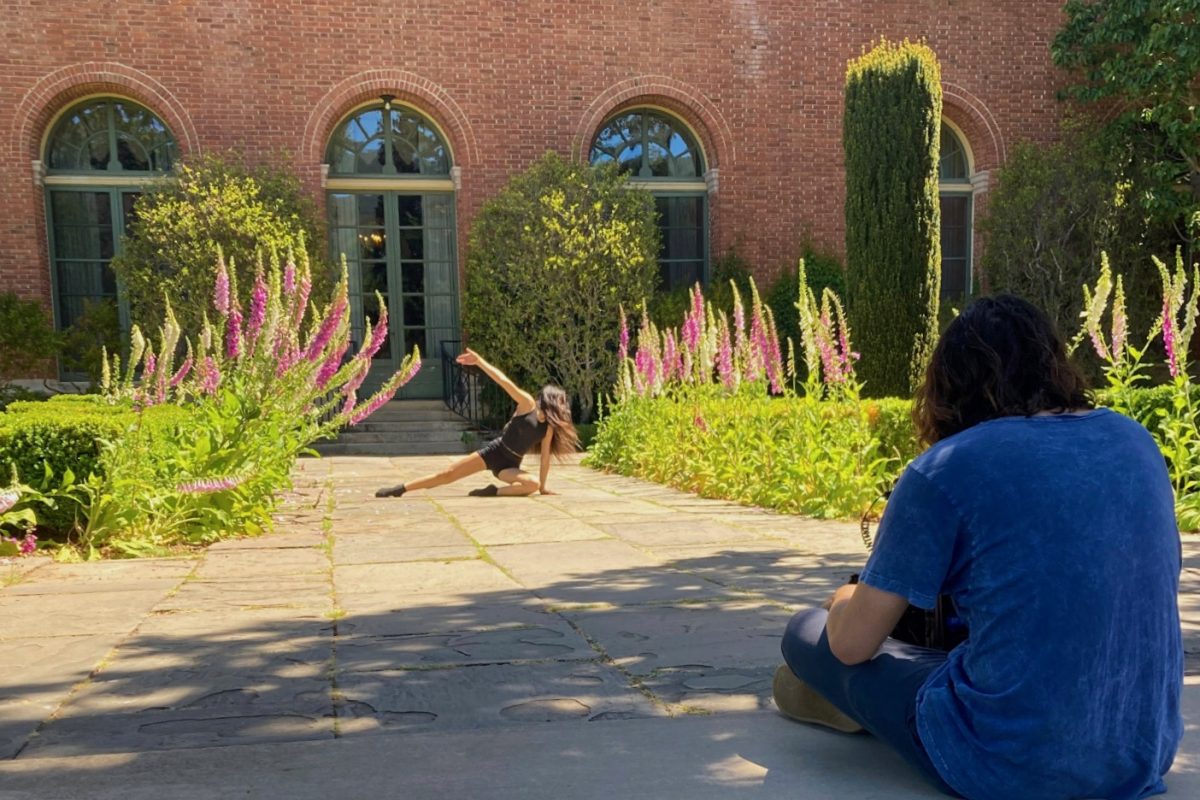Two sides of the same coin
In a lively high school classroom, on a weekday like any other, students await participating in a spirited discussion concerning the aspects of the rules of Mao Zedong and Joseph Stalin as a buzzing anticipation rests over students’ heads. Hands raised and questions prompted, Advanced Placement (AP) history teacher Jayson Waller stands at the front of the room, grading students on their arguments in active class participation.
Just down the hall, in another room, Andrew Ramroth carefully conveys advanced calculus concepts to his students, delivering a lecture to rows of children who sit quietly, taking notes and working out practice problems at their own pace.
The two teachers’ vastly different teaching styles reflect classrooms’ evolution to suit students’ needs better.
The lecture model has been the cornerstone of high school education for years. Teachers were the primary source of knowledge and presented material in a structured manner, while students absorbed information passively. While this method can efficiently convey facts, it often leaves students feeling disengaged and disconnected from the material.
According to the National Institute of Health, lecture-based teaching leads to one-sided conversations, where active students need to remember most of the information covered.
Many teachers nationwide have embraced the Socratic seminar model, recognizing its power to transform the learning experience. In these seminar-style classes, students are not passive recipients of information but active participants in their education. They engage in lively discussions, debates, and explorations, honing their critical thinking and communication skills.
The Socratic method is based more heavily on a spirited discussion among students. It catalyzes critical thinking, empowering students to form their own conclusions through self-analysis of the information rather than simply accepting what they are told.
At Carlmont in particular, Waller has been one of the most notable champions of seminar-focused classrooms. He began utilizing the seminar model after realizing the lecture model’s ineffectiveness in fostering engagement over distance learning.
“You really can’t do lecture-based over Zoom because you could see the kids unable to stay awake, and the interaction was really poor. But if I could get them to worry enough that I might call upon them to answer a question, it’s amazing how much more engaged they were in the actual Zoom,” Waller said.
The seminar model has proved to be highly successful in helping students learn on their own terms. Carlmont’s 2023 AP pass rate for Waller’s world history class was 98.3%, compared to the national average of 64.7%, according to College Board’s AP Score Distributions. On top of that, 51% of Waller’s students received the highest score, a five on the AP test, compared to the national average of 15.3%.
Other teachers find renewed value in an updated lecture-based approach. In lectures based on problems (LBP) or LectAdditionally, these modern lectures often include brief pauses for student questions or small group discussions, allowing for some interaction without sacrificing the structured delivery of content. This hybrid style addresses students’ needs for connection and understanding while maintaining the efficiency of traditional lectures.
“When I started teaching, I did a lot more direct instruction, where I was doing a lot of talking, and I felt that that led to my students doing a lot of copying down notes,” Ramroth said. “I wanted to do less me and more them, where they felt that they were creating more of their notes and they were being more active in class.”
As the standard for most classrooms, lecture-based teaching is used widely from elementary school to college due to its economic efficiency and ability to convey course content to many students with relative ease, according to a study published by BMC Medical Education. In a survey conducted in 2019, researchers at BMC found that 64% of students preferred the more progressive lectures based on problems one would encounter that utilize concepts relevant to their courses.
As teaching styles evolve with new seminars and renewed lectures, students experience mixed opinions based on balancing learning effectiveness and stress.
The students’ story
Despite the various benefits and drawbacks of each individual teaching method, when it comes to practical implementation, one style tends to win out in terms of effectiveness in the eyes of many students within a particular circumstance. “Subjects that offer more opportunities for personal interpretation tend to work much better in seminar classes,” said Haeley Kwok, a junior in Waller’s AP U.S. History class.
Many believe Waller fosters productive socratic discussion which provides a multitude of benefits through allowing students to regulate their own learning process.
“Once you start class, you’re immediately thrown into a discussion with your tablemates about the reading,” Kwok said.
However, some students also see the detriments of the forum-like style.
“Waller isn’t really the type to stand in the front of the room and lecture his students, so the class is very reliant on the student-led discussions and their participation,” said Audrey Gong, another junior in Waller’s AP U.S. History class.
Additionally, according to the National Library of Medicine, conversation and discussion have a positive impact on one’s memory, especially when taking an active role in said discussion.
Although this mandated participation fosters a sense of accountability in students, it can also produce negative reactions in students.
“It definitely helps me with going over the material, but it has a big impact on our grades, so it does cause a bit of stress,” Kwok said.
Regardless of these challenges, students still find massive enjoyment in the lighthearted contextual discussions mixed into the class to help students understand other topics better.
“I really like Waller and look forward to his responses; he’s really animated and goofy, and it makes the class very enjoyable,” Kwok said.
Many students also contrast this with the applications of a lecture-based teaching style.
“Subjects such as math are more quantitative and are better in lectures which provide more concrete visual examples for students,” Kwok said.
This more direct approach makes for a more straightforward learning experience for students.
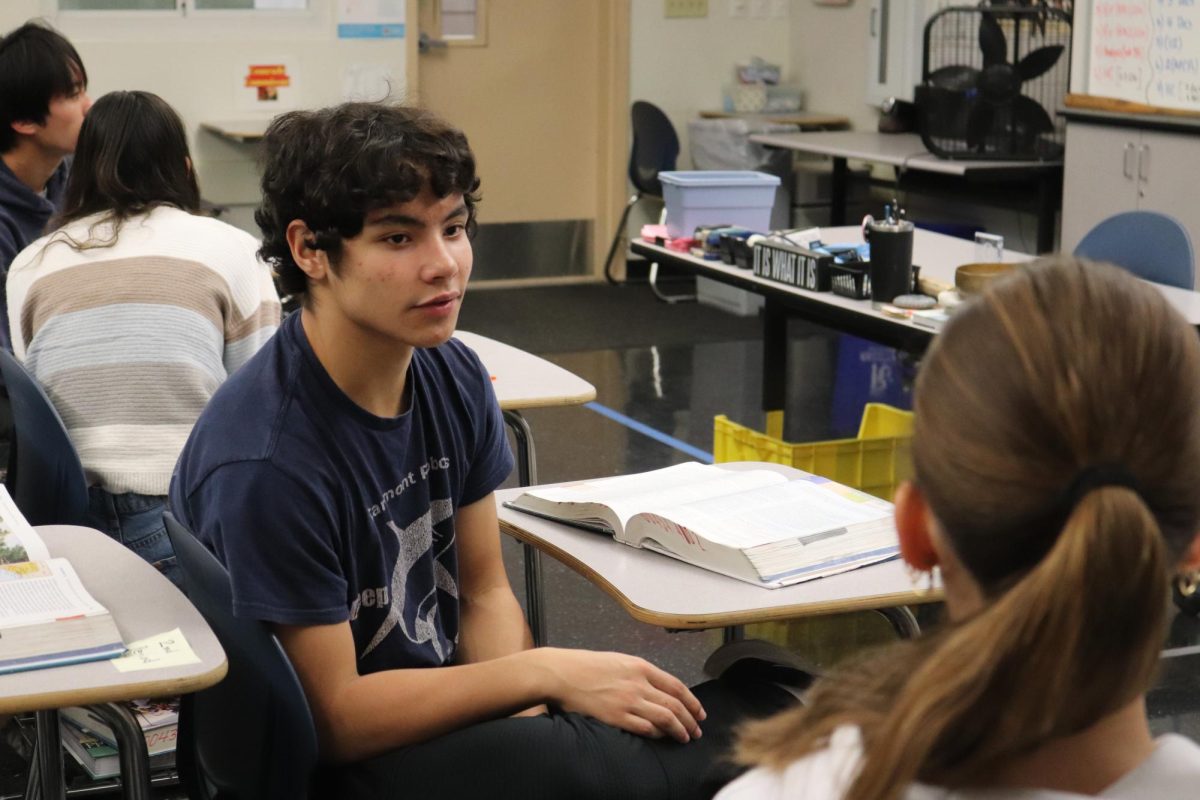
“It’s easy to succeed in a lecture-based class because there’s a baseline for how much information you’re receiving,” Kwok said. “It’s also easier to ask questions during a lecture as everyone typically raises their hand in seminar classes to compete for participation points.”
Consequently, this competition leads to students having little agency over their seminar grades, as being lucky enough to get called on becomes the primary struggle for students, despite Waller’s attempts at curbing the issue.
Therefore, though each of these teaching techniques has a plethora of differences, they share the same ultimate goal.
“Both classes are very similar in their consistency; I like being able to walk into class knowing what’s going on that day,” Gong said.
But no matter how a teacher wishes to conduct class, the most important factor remains the teachers themselves and whether they bring enthusiasm and ingenuity to the classroom dictates if students will be able to learn in class.
“Having a ‘good teacher’ is important irregardless of what class and should be the standard for all classes; the more a teacher cares about their students, the more enjoyable the class is, and the better students do,” Gong said.

